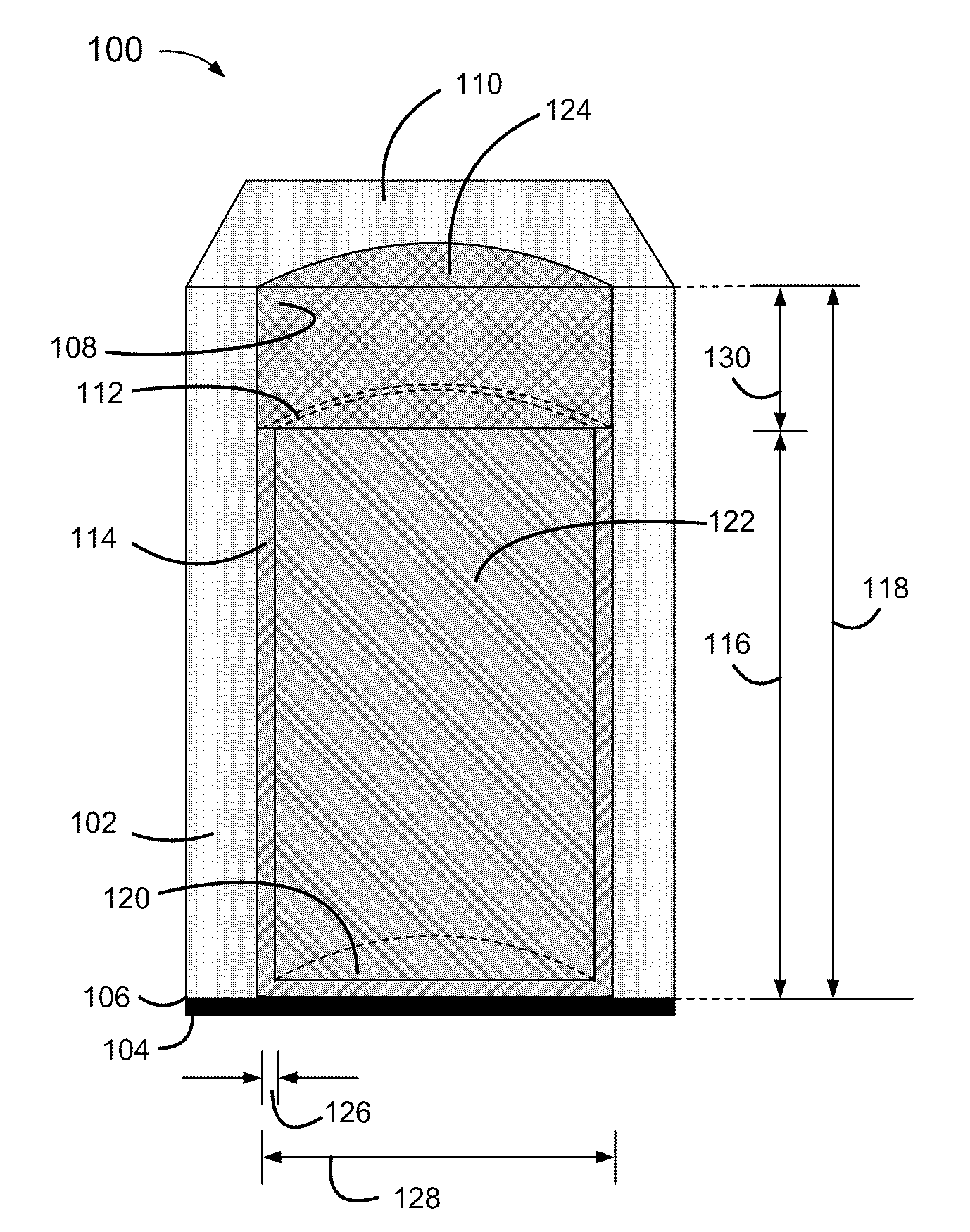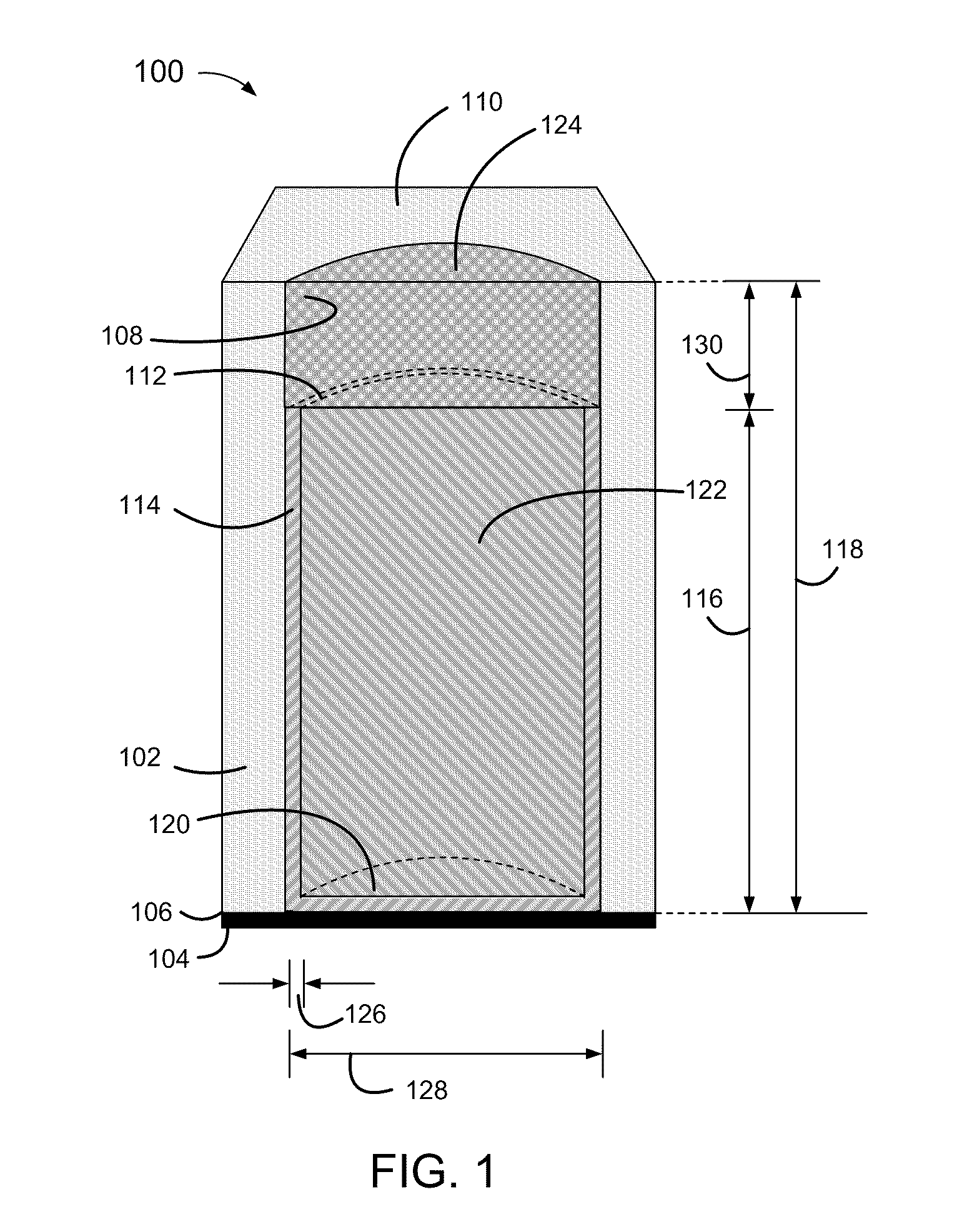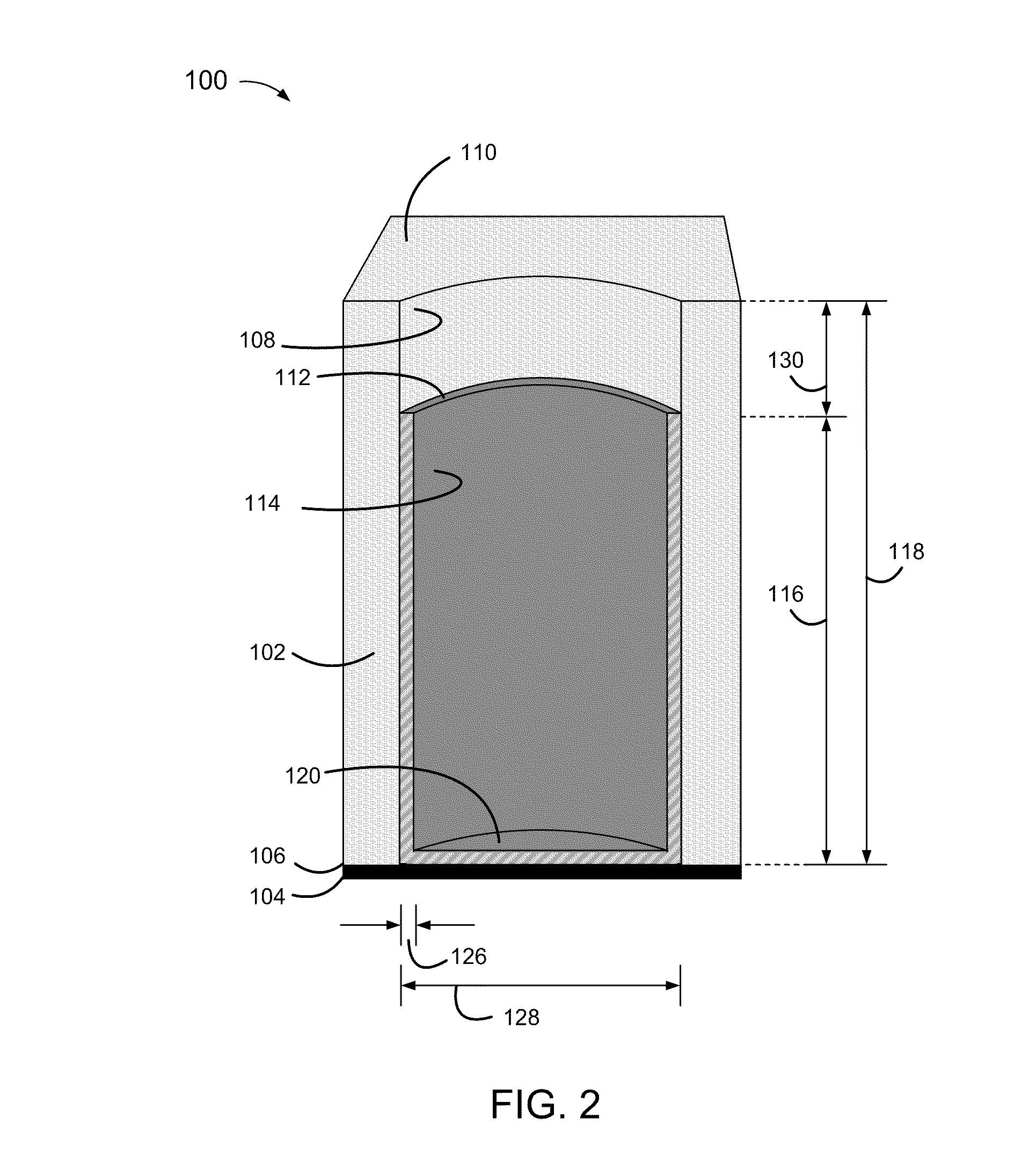Thin Film Electrodes and Battery Cells, and Methods of Fabrication
a technology of thin film electrodes and battery cells, applied in the direction of sustainable manufacturing/processing, flat cell grouping, nickel accumulators, etc., can solve the problems of short circuit in the battery, increase the mass of the battery, and increase the internal resistance and mass of the support structure, so as to reduce internal resistance and mass, provide additional flexibility to the battery, and high energy density
- Summary
- Abstract
- Description
- Claims
- Application Information
AI Technical Summary
Benefits of technology
Problems solved by technology
Method used
Image
Examples
Embodiment Construction
[0002]This invention was made with U.S. Government support under the U.S. Defense Advanced Research Projects Agency under contract number HR001-06-003. The U.S. Government has certain rights in the invention.
BACKGROUND
[0003]1. Technical Field
[0004]Disclosed herein are relatively thin-film electrodes and battery cells, and methods of fabrication, including non-metallic and electrically non-conductive porous thin films having pores with micrometer range diameters and partially metallized pore walls with a metal thickness within a range of 50 to 150 nanometers, to hold active materials within metallized portions of the pores and an electrolyte within non-metallized portions of the pores.
[0005]2. Related Art
[0006]Conventional thin film batteries are relatively thick, within a range of 500 to 5000 micrometers (μm). Conventional thin film batteries also have high internal resistances, greater than 1,000 Ohms, and correspondingly low current discharge rates, below 1 mA / cm2.
[0007]Convention...
PUM
| Property | Measurement | Unit |
|---|---|---|
| Length | aaaaa | aaaaa |
| Fraction | aaaaa | aaaaa |
| Fraction | aaaaa | aaaaa |
Abstract
Description
Claims
Application Information
 Login to View More
Login to View More - R&D
- Intellectual Property
- Life Sciences
- Materials
- Tech Scout
- Unparalleled Data Quality
- Higher Quality Content
- 60% Fewer Hallucinations
Browse by: Latest US Patents, China's latest patents, Technical Efficacy Thesaurus, Application Domain, Technology Topic, Popular Technical Reports.
© 2025 PatSnap. All rights reserved.Legal|Privacy policy|Modern Slavery Act Transparency Statement|Sitemap|About US| Contact US: help@patsnap.com



